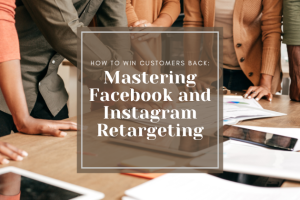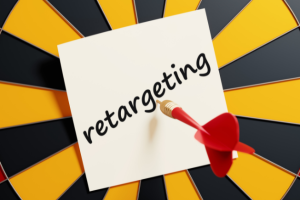Have you ever noticed how online ads know what you like? Let’s find out what behavioral targeting is and why it matters, especially when shopping online.
In online shopping, behavioral targeting is like a digital personal shopper. It’s all about tracking what you do online and using that info to show you what interests you. For example, if you’re looking for running shoes, it helps you see ads for the shoes you want.
But why does this matter for people who are shopping online? Well, it makes the whole process easier. Instead of seeing ads that have nothing to do with what you want, you get recommendations that fit your style.
Want to know more about how this works and why you see certain ads? Keep reading to learn about personalized suggestions, their psychology, and how they respect your privacy.
Understanding the Basics: What is Behavioral Targeting?
Behavioral targeting is a smart way of showing you things you’re interested in online. It’s like having a virtual personal shopper who knows your tastes and preferences. Behavioral targeting notes your actions when you search for products or browse websites.
So, what is behavioral targeting exactly?
It’s a method websites and advertisers use to keep track of what you do online. For example, if you’re into fitness, it notices that you often search for workout gear or watch exercise videos. Then, it shows you ads for gym equipment or sportswear because it knows what you might want.
But which industries commonly use behavioral targeting? You’ll find it in online retail, where it suggests products you might like. It’s also used in the travel industry to recommend destinations based on your past searches.

Importance of Behavioral Targeting in Ecommerce
In the world of online shopping, behavioral targeting is a game-changer. It’s like having a personal shopping assistant that knows your preferences inside out. Here’s why it’s so vital in eCommerce:
- Personalized Recommendations: Behavioral targeting makes online shopping more personalized. It suggests products that match your interests and past purchases.
- Increased Sales: When customers see products they like, they’re more likely to buy. Behavioral targeting boosts conversion rates.
- Reduced Cart Abandonment: It helps prevent customers from leaving their shopping carts. By showing relevant items, it keeps them engaged.
- Better User Experience: Ecommerce sites become more user-friendly. Customers enjoy a smoother and more enjoyable shopping journey.
- Cost-Effective Advertising: Advertisers spend less on showing ads to people who aren’t interested. It’s efficient and cost-effective.
- Improved Customer Loyalty: Customers are more likely to return when they feel understood.
- Enhanced Data Security: It’s important to note that responsible behavioral targeting respects user privacy. It’s about showing the right ads to people without compromising personal data.
What Is Target Behavior?
Target behavior is the desired action or response businesses seek to inspire from their audience through marketing strategies. It involves defining the ultimate goal of a campaign and determining the specific action you want your audience to perform.
Identifying the Purpose or Goal of the Campaign
When it comes to defining target behavior in a marketing campaign, consider these five essential questions:
- What Action Do You Want Them to Take?: Clearly define the primary action you want your audience to perform, whether it’s making a purchase, signing up for a newsletter, or engaging with your content.
- Who Is Your Ideal Audience?: Identify the audience segment most likely to respond to your campaign and engage with your brand.
- What Problem Does Your Product or Service Solve?: Understand the pain points and challenges your product or service addresses and how this aligns with your target audience’s needs.
- Where Does Your Audience Spend Their Time Online?: Determine the platforms and channels where your audience is most active to ensure your campaign effectively reaches them.
How Will You Measure Success?: Define key performance indicators (KPIs) that will help you track the success of your campaign and whether it’s achieving the desired target behavior.

Influence of Behavioral Targeting on Your Choices
When it comes to the online world, behavioral targeting remarkably influences the choices you make as a consumer. It’s not just about showing you random ads; it’s about understanding your preferences and psychology. Here’s how it shapes your decisions:
Personalized Recommendations
Imagine you’re browsing an online store, and it suggests products that match your past purchases or interests. Behavioral targeting makes this happen. You can recommend items you’re more likely to buy by analyzing your online behavior.
For instance, Amazon’s “Customers who bought this also bought” feature is a prime example. It guides your choices by showing what others with similar preferences choose.
Scarcity and Urgency Tactics
Behavioral targeting also taps into psychological principles like scarcity and urgency. Have you ever seen messages like “Only 2 left in stock” or “Limited-time offer”?
These tactics create a sense of urgency, making you more likely to make a quick decision. Airlines often use this technique when they display “Only 1 seat left at this price.” It influences your choice by triggering a fear of missing out.
Social Proof and Reviews
Behavioral targeting leverages social proof to shape your choices. When you see reviews, ratings, or even the number of likes a product has received, it affects your decision.
You’re more inclined to choose products with positive reviews or those others have endorsed. Think about how restaurant apps display ratings and user-generated photos. It influences your choice by showing what’s popular and trusted.
Tailored Discounts and Offers
Have you ever received an email with a discount on a product you’ve been eyeing? That’s behavioral targeting at work.
It knows your interests and can send personalized offers to nudge your decision. For example, a clothing brand might offer a special discount on your favorite style. It influences your choice by making the deal too good to resist.
Final Thoughts
In today’s marketing landscape, behavioral targeting is a game-changer. It’s all about businesses understanding you better and customizing their content and ads to match what you like.
Knowing about target behavior and the power of personalization helps you grasp how your choices as a shopper are shaped in the digital world.
As you explore the online realm, remember that behind those tailor-made recommendations and focused ads is the science of behavioral targeting. It guides how businesses connect with their audience and, in turn, influences your choices.
So, the next time you come across an ad that feels like it was designed just for you, recognize that it’s not a coincidence. It’s the outcome of the smart strategy of behavioral targeting.







